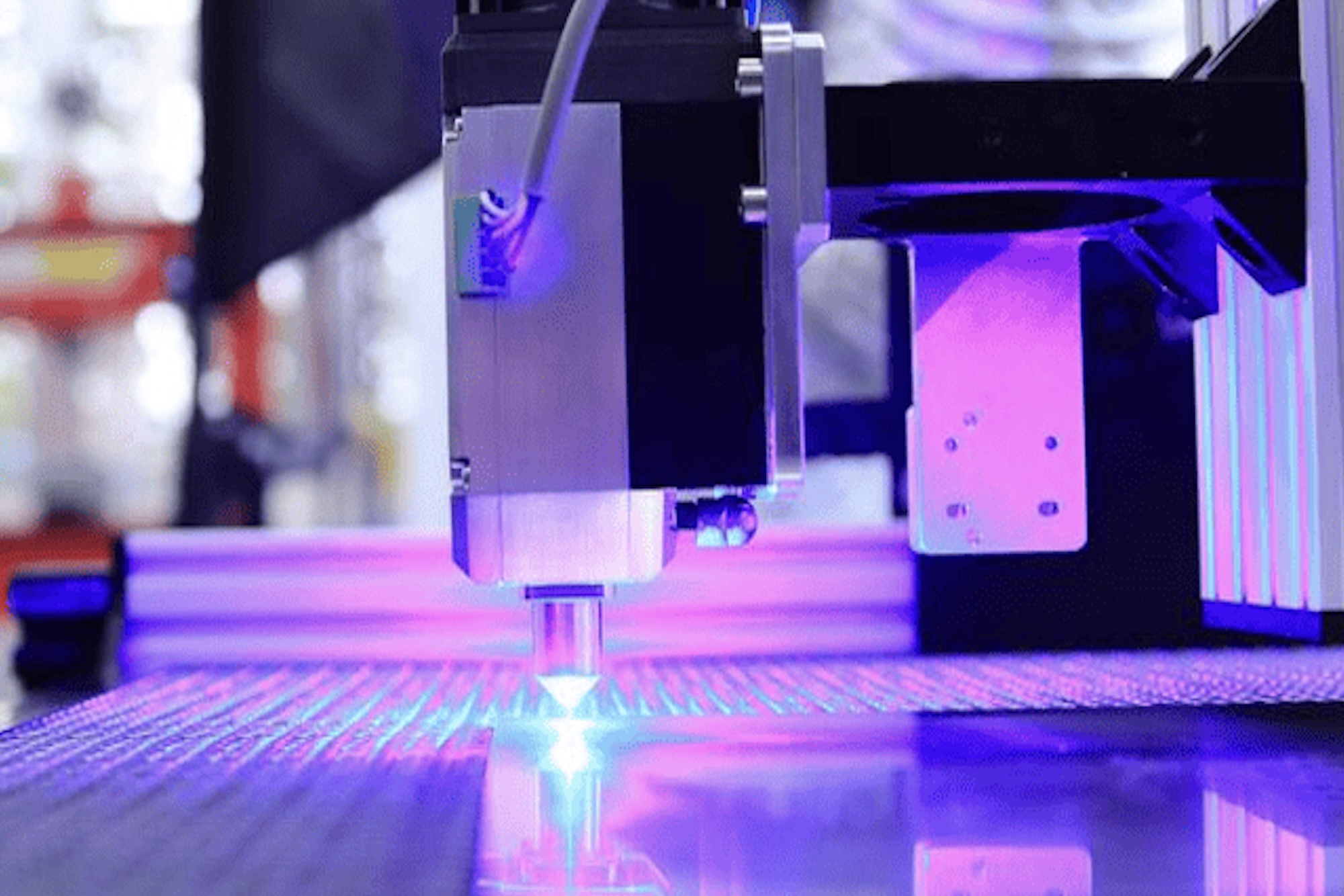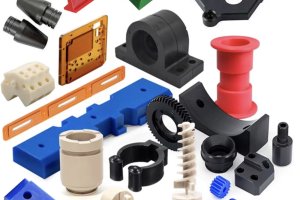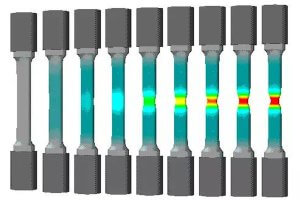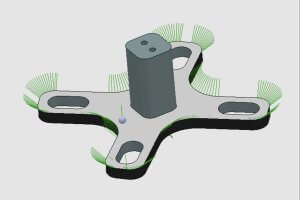Introduction
When I first started using CNC laser cutting technology, acrylic quickly became my favorite material.
It’s versatile, beautiful, and easy to shape into detailed designs.
But achieving the perfect laser cut acrylic result isn’t always straightforward.
I’ve experienced challenges like burnt edges, inaccurate cuts, and inconsistent finishes.
Over the years, I’ve learned how to overcome these issues.
Now, I want to share everything I know about laser cut acrylic.
In this complete guide, you’ll discover precision CNC cutting techniques, practical tips, and industry best practices.
Whether you create acrylic signs, crafts, prototypes, or architectural elements, this guide is for you.
Let’s dive into the details, so you can master laser cut acrylic and take your projects to the next level.
Chapter 1: What is Laser Cut Acrylic?
Understanding Acrylic
Acrylic, also known as PMMA (Polymethyl Methacrylate), is a transparent thermoplastic known for its strength, clarity, and versatility.
It’s widely used as a lighter, stronger alternative to glass.
There are two main types of acrylic used in laser cutting:
- Cast Acrylic
- Extruded Acrylic
Let’s quickly break down the differences:
| Property | Cast Acrylic | Extruded Acrylic |
|---|---|---|
| Clarity | Excellent | Very Good |
| Thickness Tolerance | ± 10% | ± 5% |
| Laser Cutting Quality | Cleaner edges, smooth finish | Slightly rougher edges |
| Cost | More expensive | Less expensive |
| Best Use Cases | Precision designs, signs, decorations | General-purpose, cost-sensitive projects |
| Heat Resistance | Higher | Lower |
In my experience, cast acrylic is typically better for laser cutting because it produces smoother edges.
Extruded acrylic works fine too, but edges might require extra finishing.
Basics of Laser Cutting Technology
Laser cutting uses a focused laser beam to precisely cut or engrave materials.
When laser cutting acrylic, the laser melts and vaporizes the acrylic along the designed path.
Two common laser types for acrylic cutting are:
- CO2 Lasers: Ideal for acrylic, wood, plastics.
- Fiber Lasers: Better for metals, less effective on clear acrylic.
CO2 lasers are my go-to for laser cut acrylic due to their exceptional accuracy, smooth edges, and efficiency.
Fiber lasers usually struggle with transparent materials like acrylic.
Why Laser Cutting is Ideal for Acrylic?
Here’s why laser cut acrylic has become so popular:
- Precision and Detail: Laser cutting achieves extremely precise cuts, ideal for intricate designs.
- Clean, Polished Edges: Proper settings result in smooth, glass-like edges, reducing finishing requirements.
- No Physical Tool Contact: Minimizes risk of damage or cracking, especially useful for delicate acrylic parts.
- Speed and Repeatability: Ideal for mass production or rapid prototyping.
Personally, I’ve found laser cutting to be superior for complex acrylic patterns.
Manual cutting methods can’t match laser precision or consistency.
Chapter 2: Combining Laser Cutting Acrylic with CNC Technology
CNC Laser Cutting Machine Principles
CNC (Computer Numerical Control) integrates laser cutting technology with computer-controlled precision.
You upload your digital designs (CAD files) to the CNC machine, and it executes the cuts accurately every time.
CNC control ensures repeatability—perfect for creating batches of identical laser cut acrylic pieces.
The precision and automation offered by CNC surpass manual methods, significantly improving productivity.
Types of CNC Laser Cutting Machines
When choosing CNC laser cutters, these are your typical options:
- CO2 CNC Laser Cutters:
Best choice for acrylic. Smooth edges, efficient cutting of varying thicknesses. - Fiber CNC Lasers:
Mostly used for metals. Struggle with clear acrylic. - Diode CNC Lasers:
Good for engraving and thin colored acrylic, less effective for cutting thicker or clear sheets.
I strongly recommend using CO2 CNC laser cutters for professional-level laser cut acrylic results.
Advantages of Combining CNC and Laser Cutting
The combination of CNC technology with laser cutting provides several advantages:
- High Precision:
CNC accuracy ensures your acrylic cuts match your exact digital designs every time. - Rapid Prototyping:
Quickly produce samples, allowing rapid design iterations. - Automation & Productivity:
CNC automation enables unattended production, reducing labor costs and errors. - Design Flexibility:
Easily switch between designs or materials without manual setup changes.
In my workshop, integrating CNC and laser cutting has drastically improved my productivity and reduced errors in acrylic projects.
Chapter 3: How to Laser Cut Acrylic Using CNC?
When I first started laser cutting acrylic using CNC, I underestimated the importance of machine selection and settings.
I soon learned that choosing the right tools and parameters makes all the difference between smooth, polished edges and burnt or distorted parts.
Here’s exactly what you need to know about laser cutting acrylic successfully with CNC.
1. Selecting CNC Laser Cutting Equipment
Not all laser cutters perform equally well on acrylic.
In my experience, CO2 laser machines consistently produce the best results.
They cut acrylic smoothly and efficiently, with minimal post-processing.
Here’s a comparison of different CNC laser types:
| Laser Type | Best Use for Acrylic | Max Acrylic Thickness | Edge Quality | Recommended Usage |
|---|---|---|---|---|
| CO2 Laser | Excellent | Up to 25mm | Smooth, polished | High-quality production |
| Fiber Laser | Poor | N/A | Rough, uneven | Not recommended for acrylic |
| Diode Laser | Moderate | Up to 5mm | Fair, slight melting | Thin sheets, engraving |
My personal recommendation is always a CO2 CNC laser cutter.
Brands like Epilog, Trotec, and Glowforge have consistently performed well for me.
2. Optimal Laser Power and Speed Settings
Selecting the right laser settings is crucial.
Too much power causes burning, while insufficient power leaves incomplete cuts.
Here’s a practical guideline based on my own testing:
| Acrylic Thickness | Laser Power (%) | Cutting Speed (mm/s) | Passes Required |
|---|---|---|---|
| 3mm (1/8″) | 30-40% | 15-20 | 1 |
| 6mm (1/4″) | 50-60% | 10-15 | 1 |
| 10mm (3/8″) | 70-80% | 5-10 | 1 |
| 12mm (1/2″) | 80-90% | 4-7 | 1-2 |
| 20mm (3/4″) | 90-100% | 3-5 | 2-3 |
These settings are starting points.
Adjust based on your specific machine and acrylic type.
Always run small test cuts first.
3. Cutting Parameters and Optimization Tips
To optimize laser cut acrylic projects, follow these tips:
- Adjust the Focus
The laser should be precisely focused. Incorrect focus causes uneven edges.
Set the focal point slightly below the surface for thicker acrylic. - Use Air Assist
Air blowing through the nozzle removes smoke and debris.
I’ve found air assist essential for achieving clean, clear edges. - Protective Film
Keep acrylic’s protective film on during cutting. It prevents residue marks and scratches.
Remove after the cut is complete. - Support Material Properly
Use a honeycomb bed or acrylic supports underneath. It prevents reflection and back burning. - Prevent Heat Buildup
For intricate patterns, reduce laser power and speed slightly. This prevents overheating the corners.
4. Common Problems and Solutions
Laser cutting acrylic isn’t without challenges.
Here’s how I deal with common issues:
- Burnt or Charred Edges
Reduce laser power or increase cutting speed.
Check air assist settings. - Cloudy or Melted Edges
Improve air assist flow, adjust laser focus, and slightly increase speed. - Incomplete Cuts
Slightly increase power, reduce speed, or repeat passes. - Warping or Distortion
Lower the cutting power, use thicker acrylic, or adjust focus depth.
I learned these solutions through trial and error.
You’ll save a lot of headaches if you apply them proactively.
Chapter 4: Applications of Laser Cut Acrylic
Laser cut acrylic offers endless possibilities.
Let’s explore some of my favorite real-world applications across multiple industries.
1. Advertising and Signage Industry
I’ve created numerous laser cut acrylic signs and displays.
They offer vibrant colors, sharp edges, and stunning clarity.
Common products include logos, directional signage, backlit displays, and promotional stands.
2. Art, Crafts, and Gift Making
Acrylic is perfect for personalized gifts and decorative items.
I’ve made custom ornaments, wedding décor, trophies, and intricate art pieces using laser cut acrylic.
It’s affordable, versatile, and visually impressive.
3. Electronics and Technology Products
Precision-cut acrylic panels are common in electronics housings and control panels.
I’ve used CNC laser cutting to fabricate custom dashboards, enclosures, and clear protective covers.
Acrylic’s transparency allows easy monitoring of internal components.
4. Architecture and Interior Design
Architects and designers frequently use laser cut acrylic for unique lighting, partitions, and decorative screens.
I’ve helped create stunning interior installations, including custom acrylic chandeliers and artistic room dividers.
5. Industrial Manufacturing and Prototyping
Laser cut acrylic is widely used in industrial applications for quick prototyping, fixtures, and templates.
I’ve personally crafted many precision acrylic prototypes and custom jigs for product testing and development.
Chapter 5: Best Practices and Common Mistakes
Over the years, I’ve made countless laser cut acrylic projects.
I’ve also made plenty of mistakes along the way—mistakes you can easily avoid.
Here are my most valuable best practices, plus solutions to common problems I’ve faced.
1. Avoiding Burn Marks and Melt Issues
Burn marks can ruin laser cut acrylic parts.
Initially, I encountered these frequently. Here’s how to avoid them:
- Adjust laser power settings carefully to avoid overheating.
- Use air assist to clear smoke and heat quickly.
- Select cast acrylic for cleaner, smoother edges.
- Keep your machine lenses and mirrors clean—dirt intensifies heat.
2. Maintaining Dimensional Accuracy
Dimensional inaccuracies often happen due to incorrect speed settings or improper focus.
- Double-check your focus before each run.
- Reduce laser power and speed for fine, detailed cuts.
- Always calibrate and test your CNC laser machine settings periodically.
3. Choosing the Right CNC Laser Cutting Machine and Tools
Choosing the right CNC laser cutter is critical for consistent quality.
Here’s what I recommend:
| Machine Brand | Type of Laser | Ideal for Acrylic | Edge Quality | User Level | Remarks |
|---|---|---|---|---|---|
| Epilog | CO2 | Excellent | Polished | Professional | High precision, best for professional use. |
| Trotec | CO2 | Excellent | Polished | Professional | Ideal for detailed engraving and cutting. |
| Glowforge | CO2 | Good to Excellent | Smooth | Beginners & Hobbyists | Easy to use, suitable for smaller projects. |
| Universal | CO2 | Excellent | Polished | Professional | Versatile industrial-grade performance. |
| Thunder Laser | CO2 | Good | Smooth | Hobbyists to Pro | Cost-effective, reliable performance. |
| Boss Laser | CO2 | Good | Smooth | Intermediate | Great for mid-sized operations. |
| Kern Laser | CO2 | Excellent | Polished | Industrial | Heavy-duty industrial applications. |
| IPG Photonics | Fiber | Poor | Rough, uneven | Industrial | Primarily for metal cutting; not recommended for acrylic. |
| Ortur | Diode | Moderate | Slightly melted | Hobbyists | Primarily for engraving; limited acrylic cutting capability. |
Additional Notes:
- CO2 Lasers are universally recognized as the best choice for laser cut acrylic.
- Fiber Lasers are not effective for cutting transparent materials (especially acrylic) and are primarily used for metal processing.
- Diode Lasers are mainly used for engraving and light cutting of thin materials, but they are not suitable for thicker or transparent acrylic.
I’ve worked with several brands and found Epilog and Trotec exceptional for professional-grade laser cut acrylic.
4. Regular Maintenance and Calibration
Maintenance impacts your results significantly.
Here’s my maintenance checklist:
- Weekly: Clean lenses and mirrors, check alignment.
- Monthly: Inspect and clean ventilation systems and air assist pumps.
- Quarterly: Full system calibration, belt tightening, and hardware inspection.
Routine maintenance ensures consistency, reduces downtime, and keeps your laser cut acrylic parts flawless.
5. Common Errors and How to Avoid Them
Here’s a quick rundown of common mistakes I’ve encountered:
- Leaving protective film off:
Always keep film on during cutting to prevent scratches and residue. - Wrong laser settings for material thickness:
Always perform small test cuts first. - Poor ventilation and air assist:
Ensure strong airflow and efficient smoke extraction. - Ignoring lens cleanliness:
Clean lenses regularly to avoid blurred or burnt cuts.
Following these best practices will save you frustration, time, and material waste.
Conclusion and Final Thoughts
Laser cut acrylic opens endless possibilities for businesses, makers, and designers.
Throughout this guide, I’ve shared everything from equipment selection to practical cutting techniques.
My goal was to equip you with the knowledge needed to achieve consistent, high-quality laser cut acrylic results.
The tips and best practices I shared are based on extensive personal experience—both successes and learning from mistakes.
Whether you’re creating signage, prototypes, or intricate artwork, mastering laser cut acrylic with CNC technology can significantly enhance your project’s quality and your production efficiency.
Remember, excellent results rely on proper machine choice, settings optimization, regular maintenance, and proactive problem-solving.
I hope this guide empowers you to create stunning, precise, and professional-quality acrylic parts every single time.
FAQ
In this section, I’ve collected the most common questions I get asked about laser cut acrylic.
My answers come from hands-on experience, helping you avoid mistakes and speed up your learning.
1. What type of acrylic is best for laser cutting?
Cast acrylic provides the cleanest edges and best results.
2. How does CNC laser cutting differ from traditional cutting methods?
CNC laser cutting provides unmatched precision, repeatability, and smooth edges, unlike manual methods.
3. What are optimal power and speed settings for different thicknesses?
Typically, thin acrylic (3mm) requires about 30-40% power at moderate speed; thicker acrylic needs higher power and slower speeds.
4. How do I prevent burn marks or melted edges?
Adjust your power settings, improve air assist, and always verify proper laser focus.
5. Can I engrave acrylic with a CNC laser cutter?
Yes, laser engraving acrylic produces sharp, clean results.
6. What safety precautions should I take?
Use eye protection, proper ventilation, fire safety measures, and never leave the laser cutter unattended during operation.
7. What common mistakes should I avoid when laser cutting acrylic?
Overpowered lasers, dirty lenses, and incorrect focus are the most frequent mistakes.
8. How can I optimize my design files for CNC laser cutting?
Simplify vectors, ensure closed paths, and double-check dimensions for accuracy before cutting.
9. What’s the difference between CO2 lasers and fiber lasers for acrylic?
CO2 lasers excel at cutting acrylic, providing smooth edges. Fiber lasers are poor for acrylic cutting.
10. How do I maintain and clean a CNC laser cutting machine?
Regular lens cleaning, proper alignment, and periodic system calibration are essential.
11. What industries commonly use laser cut acrylic?
Advertising, art, architecture, electronics, industrial prototyping, and crafts industries rely heavily on laser cut acrylic.
12. How can I combine laser cutting with other CNC machining processes?
You can laser cut acrylic and then CNC-mill or drill additional features, combining precision with versatility.
13. What’s the difference between cast and extruded acrylic when cutting?
Cast acrylic yields smoother edges and is better for precision applications; extruded acrylic is cheaper but may produce rougher edges.
14. How do I achieve smooth, polished edges?
Use a well-focused CO2 laser, proper power settings, and air assist. Sometimes flame polishing or mechanical polishing is used post-cutting.
15. What software is best for preparing designs for CNC laser cutting?
Adobe Illustrator, CorelDRAW, AutoCAD, and Inkscape are commonly used software tools for creating laser-ready designs.
Authoritative Knowledge & References:
For deeper insights, here are authoritative resources I’ve consulted extensively on laser cut acrylic and CNC techniques:
- Trotec Laser – Laser Cutting Tips:
https://www.troteclaser.com - Epilog Laser – Knowledge Base:
https://www.epiloglaser.com/resources - Acrylic Properties and Machining Guidelines – TAP Plastics:
https://www.tapplastics.com/product_info/plastics_information - Universal Laser Systems – Technical Guides:
https://www.ulsinc.com/resources - Make Magazine – CNC Laser Cutting Tutorials:
https://makezine.com/tag/laser-cutting/
Leveraging these resources, along with practical experimentation, has significantly boosted the quality of my laser cut acrylic projects.
Other Articles You Might Enjoy
- Best CNC-Cut Acrylic Signs for Retail and Events: Design and Production Guide
Chapter I:Introduction I want to start by sharing how I first realized the power of CNC-cut acrylic signs.I was working with a small retail client who wanted eye-catching store signage…
- Hard Plastic Sheets Explained For Makers And Machinists: Which One Is Right for Your Project?
Chapter 1: Introduction I've worked in manufacturing and DIY fabrication for years, frequently handling all types of materials. Among these, hard plastic sheets consistently proved versatile and reliable for various…
- Choosing Between Acrylic and Polycarbonate for CNC Machining: Clarity, Durability, and Machinability
Introduction to CNC Machining and Material Choices CNC machining, also known as Computer Numerical Control machining, is a critical aspect in the field of manufacturing. This process utilizes computerized controls…
- CNC Laser Applications That Are Reshaping Industries Today
I’ve spent a significant amount of time looking into how different manufacturing technologies evolve, and one technology that keeps grabbing my attention is CNC laser. When people talk about CNC…
- From Sparks to Precision: The Magic of Metal Laser Cutter
Introduction: The Role of Metal Laser Cutter in Modern Manufacturing Metal laser cutters are one of the most transformative tools in modern manufacturing. By integrating cutting-edge laser technology with CNC…
- Metal Engraving Techniques Explained: From CNC to Laser
Introduction: The Art and Science of Metal Engraving with CNC Metal engraving has always been a craft that combines precision, artistry, and functionality. Historically, it was the realm of skilled…
- Laser Cutting Aluminum: Transforming Aluminum into Perfection
Laser Cutting Aluminum: An Introduction The process of laser cutting aluminum is a potent technology integral to the manufacturing sector. It involves focusing concentrated beams of laser light on an…
- Machining Techniques for Parts: Unlocking CNC and Cutting-Edge Tech
I. Introduction I remember the first time I realized how critical machining is to modern manufacturing. I was interning at a small shop, watching a CNC machine carve intricate features…









